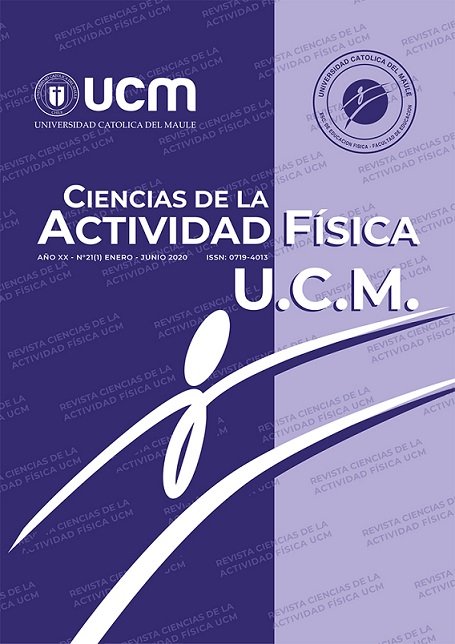Bachand, C. R. (2017). Bullying in sports: The definition depends on who you ask. Sports Studies and Sports Psychology, 9, 1-14. https://thesportjournal.org/article/bullying-in-sports-the-definition-depends-on-who-you-ask/
Björkqvist, K. (2018). Gender differences in aggression. Current Opinion in Psychology, 19, 39-42. https://doi.org/10.1016/j.copsyc.2017.03.030
Brunstein, A., Sourander, A., & Elonheimo, H. (2015). Bullying by peers in childhood and effects on psychopathology, suicidality, and criminality in adulthood. The Lancet Psychiatry, 2(10), 930-941. https://doi.org/10.1016/S2215-0366(15)00223-0
Bullying sin Fronteras (2018). Bullying sin fronteras: Estadísticas de Bullying en América Latina. Primer Estudio Internacional. https://bullyingsinfronteras.blogspot.com/2018/02/estadisticas-de-bullying-en-america.html
Chai, L., Xue, J., & Han, Z. (2020). School bullying victimization and self-rated health and life satisfaction: The me-diating effect of relationships with parents, teachers, and peers. Children and Youth Services Review, 117, 105281. https://doi.org/10.1016/j.childyouth.2020.105281
Domínguez-Alonso, J., López-Castedo, A., & Nieto-Campos, B. (2019). Violencia escolar: diferencias de género en estudiantes de secundaria. Revista Complutense de Educación, 30(4), 1031-1044. https://doi.org/10.5209/rced.59997
Estrada, M. A., & Jaik, A. (2011). Cuestionario para la exploración del bullying. Visión Educativa IUNAES, 5(11), 45-49. https://dialnet.unirioja.es/servlet/articulo?codigo=4034505
Evans, B., Adler, A., MacDonald, D., & Côté, J. (2016). Bullying Victimization and Perpetration among Adolescent Sport Teammates. Pediatric Exercise Science, 28(2), 296-303. https://doi.org/10.1123/pes.2015-0088
Garaigordobil, M., & Martínez-Valderrey, V. (2018). Technological resources to prevent cyberbullying during adolescence: the cyberprogram 2.0 program and the cooperative cybereduca 2.0 videogame. Frontiers in psychology, 9, 745. https://doi.org/10.3389/fpsyg.2018.00745
Holbrook, H. M., Voller, F., Castellini, G., Silvestri, C., Ricca, V., Cassioli, E., … Hudziak, J. J. (2020). Sport participation moderates association between bullying and depressive symptoms in Italian adolescents. Journal of Affective Disorders, 271, 33-38. https://doi.org/10.1016/j.jad.2020.03.142
Klomek, A. B., Sourander, A., & Elonheimo, H. (2015). Bullying by peers in childhood and effects on psychopathology, suicidality, and criminality in adulthood. The Lancet Psychiatry, 2(10), 930-941. https://doi.org/10.1016/S2215-0366(15)00223-0
Machimbarrena, J. M., & Garaigordobil, M. (2018). Bullying y cyberbullying: diferencias en función del sexo en estudiantes de quinto y sexto curso de educación primaria. Suma Psicológica, 25(2), 102-112. https://doi.org/10.14349/sumapsi.2018.v25.n2.2
Malamut, S. T., van den Berg, Y. H., Lansu, T. A., & Cillessen, A. H. (2020). Dyadic nominations of bullying: Comparing types of bullies and their victims. Aggressive behavior, 46(3), 232-243. https://doi.org/10.1002/ab.21884
Morcillo, C., Ramos-Olazagasti, M. A., Blanco, C., Sala, R., Canino, G., Bird, H., & Duarte, C. S. (2014). Socio-Cultural Context and Bulling Others in Childhood. Journal of Child and Family Studies, 24, 2241-2249. https://doi.org/10.1007/s10826-014-0026-1
Nery, M., Neto, C., Rosado, A., & Smith, P. K. (2018). Bullying in youth sport training: A nationwide exploratory and descriptive research in Portugal. European Journal of Developmental Psychology, 16(4), 447-463. https://doi.org/10.1080/17405629.2018.1447459
ONG. (2019). Estadísticas mundiales de bullying 2017/2018. Primer trabajo oficial en el mundo contra el bullying. https://bullyingsinfronteras.blogspot.com/2018/10/estadisticas-mundiales-de-bullying_29.html
Pepler, D. J., Craig, W. M., Connolly, J. A., Yuile, A., McMaster, L., & Jiang, D. (2006). A developmental perspective on bullying. Aggressive Behavior, 32(4), 376-384. https://doi.org/10.1002/ab.20136
Rech, R. R., Halpern, R., Tedesco, A., & Santos, D. F. (2013). Prevalence and characteristics of victims and perpetrators of bullying. Journal de Pediatria, 89(2), 164-170. https://doi.org/10.1016/j.jpedp.2012.09.004
Ruiz, Y. (2018). Bullying en las escuelas. ¡Ahora! http://www.ahora.cu/es/opinion/668-bullying-en-las-escuelas
Silva, D., Tavares, E., Silva, E., Duarte, J., Cabral, L., y Martins, C. (2017). Vítimas e agressores: manifestações de bullying em alunos do 6º ao 9º ano de escolaridade. Revista Portuguesa de Enfermagem de Saúde Mental, (spe5), 57-62. http://dx.doi.org/10.19131/rpesm.0168
Sanmartín, J. (2007). ¿Qué es la violencia? Una aproximación al concepto y a la clasificación de la violencia. Daimon. Revista de Filosofía, (42), 9-21. https://revistas.um.es/daimon/article/view/95881
Smokowski, P. R., & Evans, C. B. (2019). Bullying and Victimization across the Lifespan: Playground Politics and Power. Springer.
Stirling, A. E., Bridges, E. J., Cruz, E. L., & Mountjoy, M. L. (2011). Canadian Academy of Sport and Exercise Medicine position paper: Abuse, harassment, and bullying in sport. Clinical journal of sport medicine, 21(5), 385-391. http://dx.doi.org/10.1097 / JSM.0b013e31820f9248
http://dx.doi.org/10.1097 / JSM.0b013e31820f9248
Vveinhardt, J., & Fominiene, V. B. (2020). Gender and age variables of bullying in organized sport: Is bullying “grown out of”? Journal of Human Sport and Exercise, 15(4), 747-761. https://doi.org/10.14198/jhse.2020.154.03


 https://orcid.org/0000-0002-4251-1680
https://orcid.org/0000-0002-4251-1680
